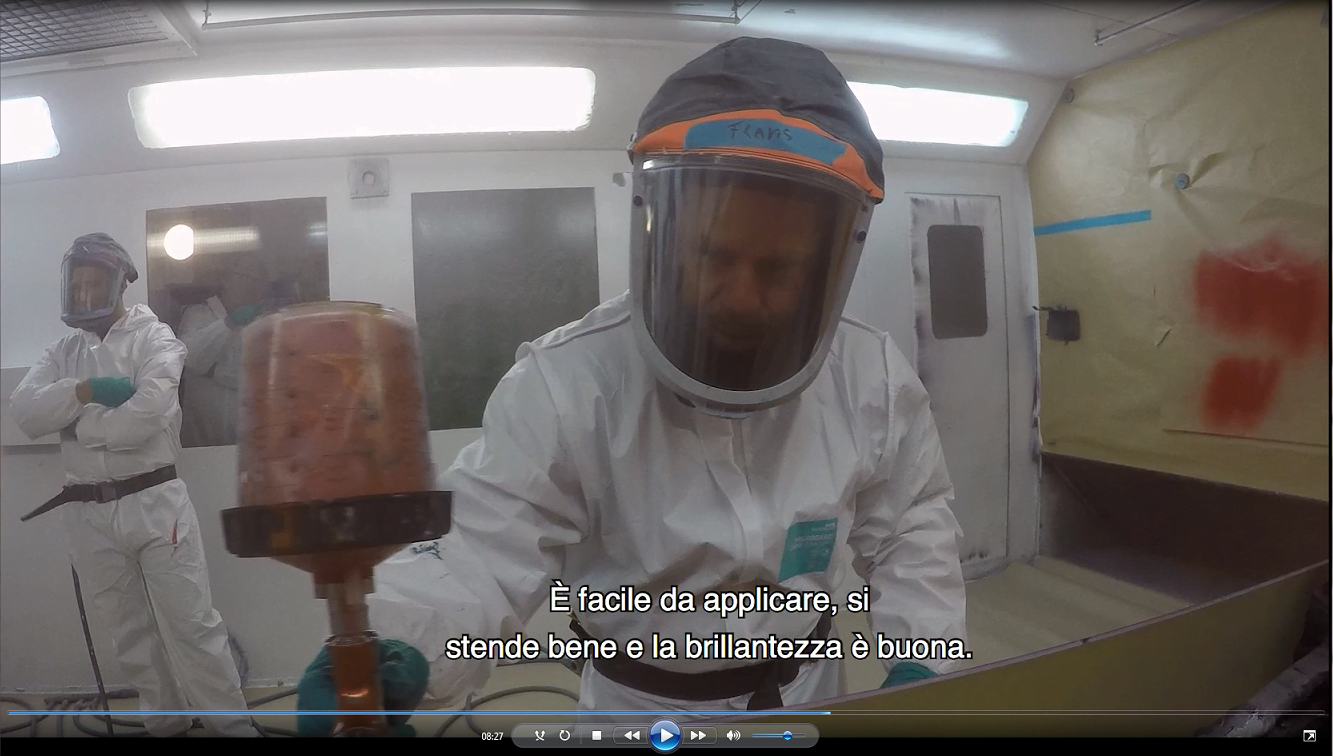Should I use subtitles or voice-over for my video content?
One of the questions we’re asked most when we’re working with video content is “What would you recommend; subtitling or voice-over?” Here we’re going to look at each of them explaining them in more detail and how to choose the right one for you.
Voice-over

What is it?
When your video is dubbed (has a voice-over) the original audio is turned down or muted and another voice speaking in a different language plays over the top.
The voice-over process:
1) Your video is transcribed
First, you need a script of the video. This should be done by a professional who will lay it out in a clear way, such as the example below:
>>GARY: Hi, my name is Gary and this is my colleague Andy.
>>ANDY: Hi all.
>> GARY: Today we’re going to demo our latest product. We’re going to talk you through how to set it up and install it in your office.
2) Your script is time-coded
Time-coding is the best way to ensure a professional, high-quality end product in the smoothest workflow and shortest amount of time. It is highly recommended for videos where the video requires dubbing with lip sync.
Scripts can be recorded ‘wild’ without time-coding but this is usually recommended for audio only files where no lip sync is required because you don’t see the narrator on screen. If you record a script wild where lip sync is required it can mean a lot of editing and re-recording in the final stages, losing time and money. If changes need to be made after the voice-over has been recorded because the recording is too long, it’ll cost more to book in additional studio time and pay for another recording than ensuring the script is cut to the correct length beforehand.
When your script is time-coded, time stamps are placed throughout the text at regular intervals to break it up like the following example:
[00:14:56:00] 14 minutes and 56 seconds
In interviews, for example, time stamps will be placed when the interviewer starts speaking and then when the interviewee speaks. If someone speaks for a long time, a time stamp will usually be placed every 30 seconds.
3) Your time-coded script is translated
Specialist translators then translate the time-coded script into all of the languages you require, in accordance with guidelines on spatial restrictions.
4) Your voice-over is recorded
Voice-over artistes are professional actors and native speakers of your required languages who are adept in adapting to the style and tone of the original voice. The voice-over artiste or artistes depending on how many languages you require, will record the voice-overs in a recording studio.
5) The recordings are added to your video
If you’re choosing to lip sync your video, the recordings are then added over the top of the original speaker(s) by professional editors who aim to make the new voices and lip movements on screen as synchronised as possible.
6) Your video is delivered in the required format
After editing, your video is saved in the format you sent the original video in and it’s ready to use.
What are the main advantages of voice-over?
- When voice-over is done to a high standard using professional voice-over artistes it looks very professional
- It makes your video more relatable to the viewer
- When done well, it’s not distracting for the viewer as reading subtitles
What should you be aware of?
- It’s a more expensive service than subtitling as it includes professional voice-over artistes and the use of a studio
- If your video is emotive, you may lose some of the emotion by using a different voice
- If done cheaply, there may be mismatched lip movements, which can be distracting for the viewer(s)
Subtitling

What is it?
When your video is subtitled one or two lines of text will appear at the bottom of the screen, which paraphrases what the speaker(s) are saying.
The subtitling process:
1) Your video is transcribed
In the same way as with voice-over preparation, your video needs transcribing and laying out in a professional way.
2) Your script is time-coded
As with voice-over projects, time stamps are placed throughout the script but it’s done in a slightly different way.
There’s limited space available for subtitles so the script is broken down and split as if the text were subtitles. The time stamps will be added to each subtitle showing when it should appear and disappear like the following example:
Time in | Time out | English |
[00:00:01:14] | [00:00:03:16] | Hi, how are you today |
3) Your time-coded script is translated
For all of the languages you require, specialist translators then translate the time-coded script. Subtitles must adhere to strict character counts, more so than voice-overs where the voice speed could compensate for a slight increase in text length. These restrictions also vary depending on the language the script is being translated into. For example, the space for characters is more limited for Japanese and Chinese than it is for French and Spanish because the font is larger to show the intricacy of the characters.
4) Your subtitles are burnt on to your video
The translated subtitles are then burnt on to your video to match the time-codings to make them appear on screen in a smooth way so as not to distract the viewer.
5) Your video is delivered in the required format
After editing, your video is saved in the format you sent the original video in and it’s ready to use
What are the advantages of using subtitles?
- It’s more cost effective than voice-over
- The process is often quicker as there’s no need to book a voice-over artiste and a recording studio
- The original actors’ voices can be heard as they were intended to be
What should you be aware of?
- It can be more distracting for the viewer than a high-quality voice-over if they’re not used to reading subtitles.
- There are spatial restrictions to consider. They could cover up graphics or existing text in your video. If there are graphics, it’s also worth considering whether you need them translating too.
How to choose the right option for you
You need to ask yourself the following questions before making a decision between voice-over and subtitling:
1) What is your budget
Do you have a budget to spend on professional voice-over? For a high-quality product, you’ll need to use professional voice-over artistes, studio engineers and video editors. If you have the budget, this is the option we recommend. If you have a lower budget, it’s much better to opt for subtitles rather than having a voice-over carried out cheaply.
2) How much time do you have?
Do you have the additional couple of days it takes for voice-overs to be recorded? If you have a looming deadline, see if you can do any of the following to reduce turnaround time:
- Have your script ready rather than having your video transcribed
- Be available to answer any queries during the translation phase
What are your viewers’ needs?
- Do your viewers need to hear the original voices to provoke a certain emotion? If so, opt for subtitles.
- Is your video intended for a high-profile promotional pitch with narrators on screen? Opt for lip-synched voice-over.
- Is your video demo-ing a product or showcasing a game that doesn’t have a narrator on screen? Opt for audio only voice-over.
Andiamo! has significant experience in both voice-over and subtitling and we’re here to guide you. If you have a video and still aren’t sure which option is right for you, give us a call on 08450 345677 and one of our friendly team will talk you through it.







